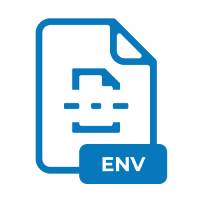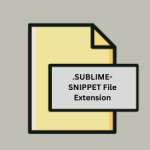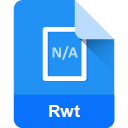.ENV File Extension

Now Contact Envelope Template
| Developer | Now Software |
| Popularity | |
| Category | Page Layout Files |
| Format | .ENV |
| Cross Platform | Update Soon |
What is an ENV file?
The .ENV file extension is primarily affiliated with the Contact Envelope Template, serving as a container for contact information.
It is commonly utilized in settings where structured data about contacts, such as names, addresses, phone numbers, and email addresses, needs to be stored and managed efficiently.
The .ENV format facilitates the organization and exchange of contact details in a standardized manner.
More Information.
The .ENV file format was conceived with the primary objective of streamlining the handling of contact information across various platforms and applications.
Its inception can be attributed to the growing demand for interoperability among contact management systems, necessitating a universal format for storing contact details.
Initially, the .ENV file served as a proprietary format for specific contact management software, but over time, it gained traction as a widely accepted standard.
Origin Of This File.
The genesis of the .ENV file extension can be traced back to the evolving landscape of digital communication and contact management systems.
With the proliferation of electronic mail and address book applications, there arose a need for a standardized format to store and exchange contact information.
Thus, the .ENV file emerged as a solution, providing a structured framework for encapsulating contact data.
File Structure Technical Specification.
The .ENV file follows a structured format designed to accommodate different fields of contact information.
Typically, it employs a plain text format with delineated fields for each aspect of contact data, such as name, address, phone number, and email address.
The structure may vary slightly depending on the software application generating or interpreting the .ENV file, but adherence to basic contact information principles remains consistent.
How to Convert the File?
Converting .ENV files to other formats or vice versa may be necessary in certain scenarios to ensure compatibility or access to additional features.
While direct conversion tools specifically tailored for .ENV files may be limited, alternative approaches can be employed:
- Export Functionality: Many contact management applications that support .ENV files offer export options to convert contacts into more widely recognized formats such as CSV (Comma-Separated Values) or VCF (vCard File).
- Third-Party Conversion Tools: Utilize third-party software or online services designed for converting between different contact data formats. These tools may offer batch processing capabilities and support for various output formats.
- Manual Conversion: In cases where automated conversion is not feasible, manual conversion by copying and pasting contact information into a preferred format may be necessary, albeit time-consuming.
Advantages And Disadvantages.
Advantages:
- Portability: The .ENV format facilitates easy exchange of contact information across diverse platforms and applications.
- Standardization: By adhering to a predefined structure, .ENV files ensure consistency in how contact data is represented and interpreted.
- Compatibility: Many contact management systems and applications support the .ENV format, enhancing interoperability.
- Simplicity: The plain text nature of .ENV files makes them easy to create, edit, and manipulate using basic text editors.
- Efficiency: With its lightweight design, .ENV files impose minimal overhead on storage and processing resources.
Disadvantages:
- Limited Features: The .ENV format may lack advanced features available in more modern contact data formats.
- Security Concerns: Plain text storage of contact information in .ENV files may pose security risks if sensitive data is not adequately protected.
- Compatibility Issues: While widely supported, some applications may not fully adhere to the .ENV file specification, leading to compatibility issues.
- Lack of Extensibility: Unlike some other contact data formats, the .ENV format may not easily accommodate custom fields or additional metadata.
- Risk of Data Corruption: As with any file format, .ENV files are susceptible to corruption or data loss if not handled properly.
How to Open ENV?
Open In Windows
- Use text editors like Notepad or Notepad++ to open and view .ENV files.
- Alternatively, import .ENV files into contact management software like Microsoft Outlook or Windows Contacts.
Open In Linux
- Text editors like Gedit or Vim can be employed to open .ENV files in Linux distributions.
- Utilize contact management software compatible with .ENV files, if available.
Open In MAC
- TextEdit or other text editing applications can be used to open .ENV files on macOS.
- Import .ENV files into Apple Contacts for a more structured view of contact information.













